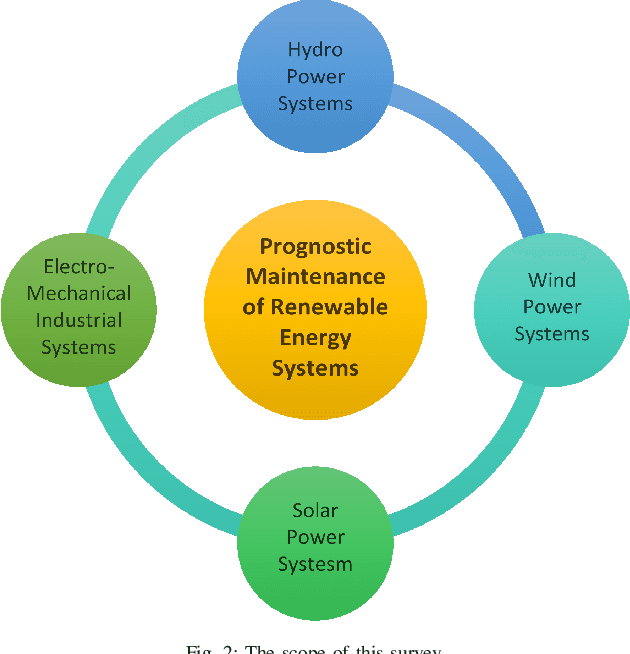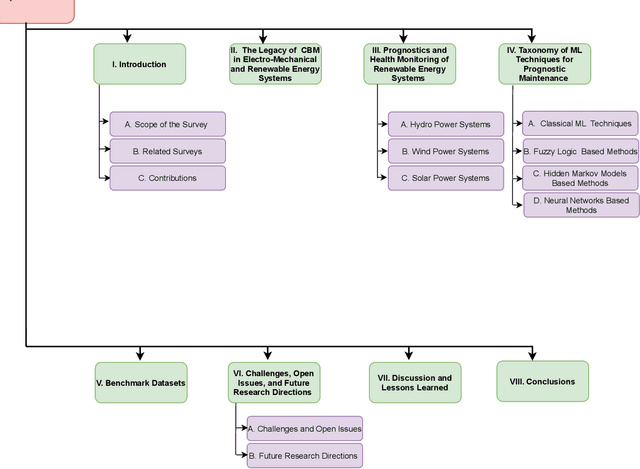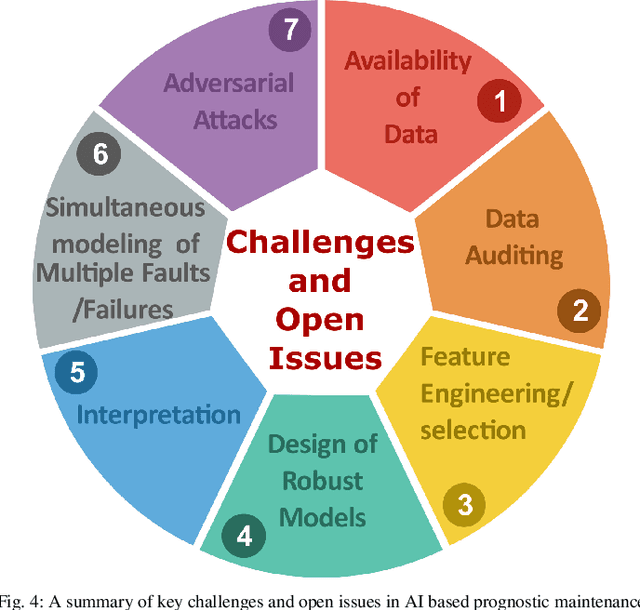Laiq Hassan
Artificial Intelligence Based Prognostic Maintenance of Renewable Energy Systems: A Review of Techniques, Challenges, and Future Research Directions
Apr 20, 2021



Abstract:Since the depletion of fossil fuels, the world has started to rely heavily on renewable sources of energy. With every passing year, our dependency on the renewable sources of energy is increasing exponentially. As a result, complex and hybrid generation systems are being designed and developed to meet the energy demands and ensure energy security in a country. The continual improvement in the technology and an effort towards the provision of uninterrupted power to the end-users is strongly dependent on an effective and fault resilient Operation and Maintenance (O&M) system. Ingenious algorithms and techniques are hence been introduced aiming to minimize equipment and plant downtime. Efforts are being made to develop robust Prognostic Maintenance systems that can identify the faults before they occur. To this aim, complex Data Analytics and Machine Learning (ML) techniques are being used to increase the overall efficiency of these prognostic maintenance systems. This paper provides an overview of the predictive/prognostic maintenance frameworks reported in the literature. We pay a particular focus to the approaches, challenges including data-related issues, such as the availability and quality of the data and data auditing, feature engineering, interpretability, and security issues. Being a key aspect of ML-based solutions, we also discuss some of the commonly used publicly available datasets in the domain. The paper also identifies key future research directions. We believe such detailed analysis will provide a baseline for future research in the domain.
Fake News Detection in Social Media using Graph Neural Networks and NLP Techniques: A COVID-19 Use-case
Nov 30, 2020

Abstract:The paper presents our solutions for the MediaEval 2020 task namely FakeNews: Corona Virus and 5G Conspiracy Multimedia Twitter-Data-Based Analysis. The task aims to analyze tweets related to COVID-19 and 5G conspiracy theories to detect misinformation spreaders. The task is composed of two sub-tasks namely (i) text-based, and (ii) structure-based fake news detection. For the first task, we propose six different solutions relying on Bag of Words (BoW) and BERT embedding. Three of the methods aim at binary classification task by differentiating in 5G conspiracy and the rest of the COVID-19 related tweets while the rest of them treat the task as ternary classification problem. In the ternary classification task, our BoW and BERT based methods obtained an F1-score of .606% and .566% on the development set, respectively. On the binary classification, the BoW and BERT based solutions obtained an average F1-score of .666% and .693%, respectively. On the other hand, for structure-based fake news detection, we rely on Graph Neural Networks (GNNs) achieving an average ROC of .95% on the development set.
 Add to Chrome
Add to Chrome Add to Firefox
Add to Firefox Add to Edge
Add to Edge